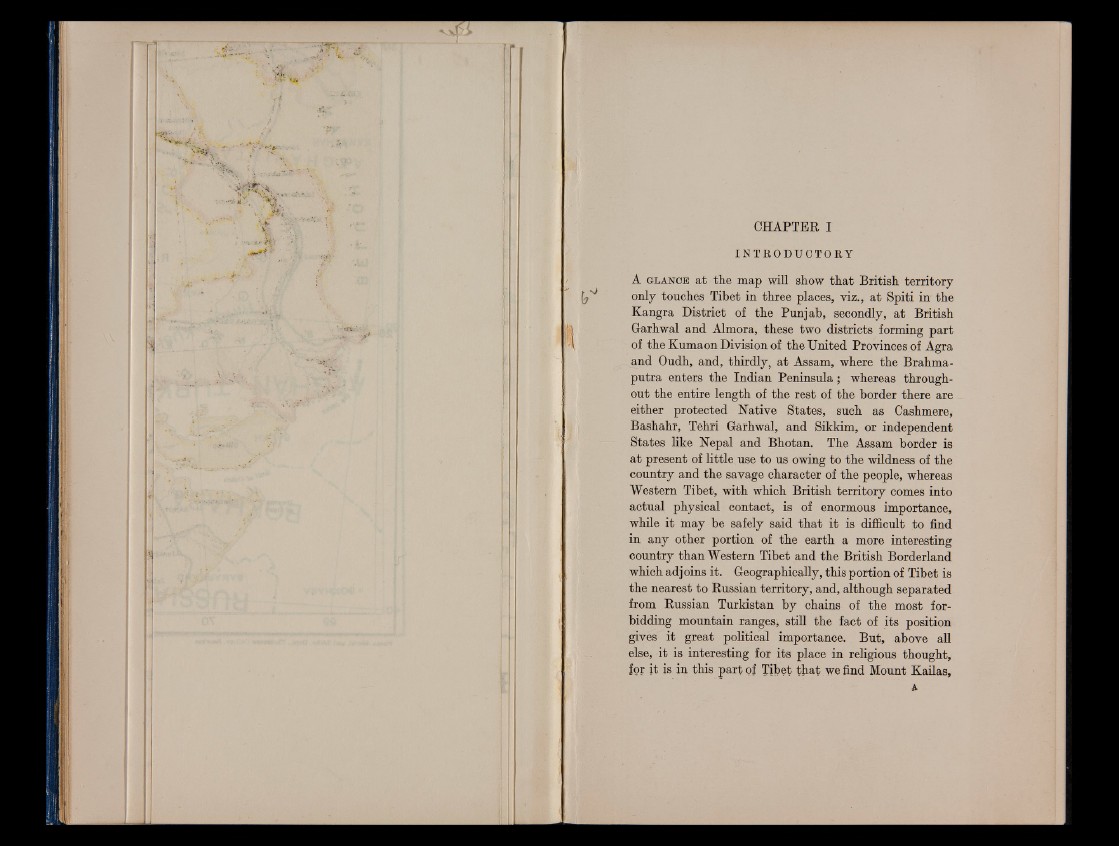
CHAPTER I
INTRODUCTORY
A g l a n c e at the map will show that British territory
only touches Tibet in three places, viz., at Spiti in the
Kangra District of the Punjab, secondly, at British
Garhwal and Almora, these two districts forming part
of the Kumaon Division of the United Provinces of Agra
and Oudh, and, thirdly, at Assam, where the Brahmaputra
enters the Indian Peninsula; whereas throughout
the entire length of the rest of the border there are
either protected Native States, such as Cashmere,
Bashahr, Tehri Garhwal, and Sikkim, or independent
States like Nepal and Bhotan. The Assam border is
at present of little, use to us owing to the wildness of the
country and the savage character of the people, whereas
Western Tibet, with which British territory comes into
actual physical contact, is of enormous importance,
while it may be safely said that it is difficult to find
in any other portion of the earth a more interesting
country than Western Tibet and the British Borderland
which adj oins it. Geographically, this portion of Tibet is
the nearest to Russian territory, and, although separated
from Russian Turkistan by chains of the most forbidding
mountain ranges, still the fact of its position
gives it great political importance. But, above all
else, it is interesting for its place in religious thought,
for it is in this part of Tibet that we find Mount Kailas,